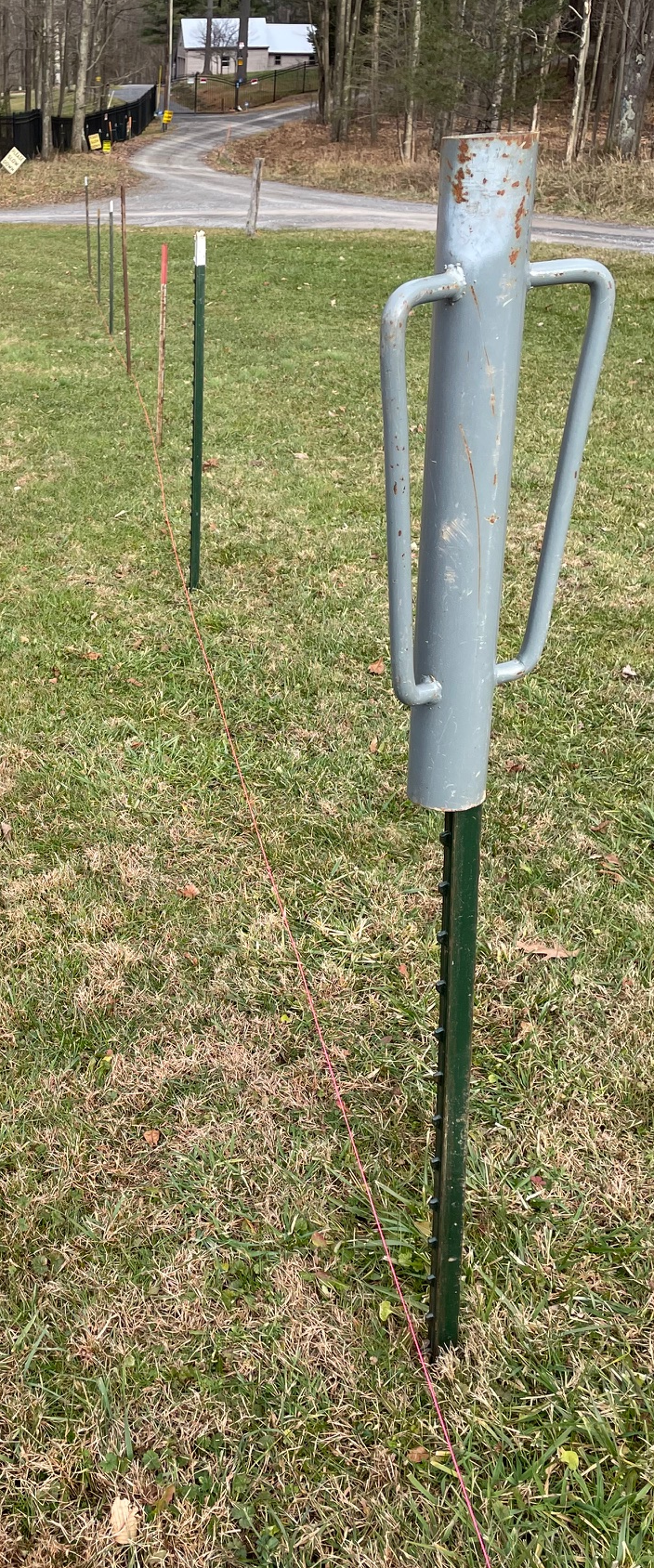T Post and U Channel
T Posts
A T Post, also known as a T-bar or a T-stake, is a type of fence post used primarily in agricultural and farming applications to support fencing. It is named for its shape, which resembles the letter "T" when viewed from the end. These posts are typically made of steel and come in various lengths and weights, allowing them to be driven into the ground easily to provide stability for fencing materials like wire mesh, barbed wire, or electric fencing. T-posts are durable, cost-effective, and commonly used in agricultural settings for their ease of installation and ability to withstand tension from fencing materials.
T Posts are versatile and can be used with various types of fencing materials in agricultural, residential, and commercial settings. Some common types of fencing used with T-posts include:
- Wire Mesh Fencing: This includes welded wire or woven wire mesh that can be attached to T-posts using clips or fasteners. It's commonly used for containing livestock, creating enclosures, or securing gardens.
- Barbed Wire Fencing: T-posts are often utilized for supporting strands of barbed wire, which is frequently used in agricultural applications for livestock containment and perimeter fencing.
- Electric Fencing: T-posts can serve as the support for electric fencing systems. Electric wires or tapes are connected to insulators on the T-posts to create an electric barrier for livestock control.
- High-Tensile Fencing: This type of fencing uses high-tensile wire stretched between T-posts to create a strong and durable barrier for containing livestock. It's known for its strength and longevity.
- Plastic or Wooden Rails: T-posts can also be used to support plastic or wooden rails, creating a solid and sturdy fence commonly seen in rural or residential settings.
- Temporary Fencing: T-posts are often used in temporary fencing setups, supporting various materials such as plastic mesh, snow fencing, or other lightweight barriers used for short-term purposes.
The choice of fencing material often depends on the specific requirements of the enclosure, the type of animals being contained, desired durability, cost considerations, and the intended purpose of the fence. T-posts provide a versatile and adaptable option for securing different types of fencing materials.
U - Channel Posts
A U-channel post, also known as a U-post, is a type of metal fence post that, as the name suggests, has a U-shaped cross-section when viewed from the side. These posts are typically made of galvanized steel, making them durable and resistant to rust and corrosion.
 U-channel posts are commonly used in various fencing applications, including:
U-channel posts are commonly used in various fencing applications, including:
- Signage: They are frequently employed to support road signs, traffic signs, and other informational or regulatory signs along roadways and in other public areas.
- Temporary Fencing: U-channel posts are also utilized in temporary fencing setups, such as for construction sites, crowd control at events, or to cordon off specific areas temporarily.
- Residential Fencing: Sometimes used in residential settings, especially for lightweight fencing projects where they can be paired with wire mesh, plastic netting, or other materials for small enclosures or garden protection.
- Landscaping: In landscaping projects, U-channel posts might be used to secure barriers or boundary markers, define pathways, or support light fencing around garden areas.
These posts typically have pre-punched holes along the length of the channel, allowing for easy attachment of fencing materials using wires, fasteners, or clips. They are relatively easy to install and offer versatility for various applications due to their design and the ability to accommodate different types of fencing materials.
Metal Post Driver
The photo (right) shows a metal post driver on top of a T Post. These metal post drivers drastically simplify installation of T Posts or U-Channel Posts. Metal post drivers like the one shown are much safer to use, save a tremendous amount of time, require far less effort to drive the posts AND keep the top of the posts from becoming deformed. Driving a post with a hammer or small sledge often has the effect of creating razor sharp deformations on the top of the posts.
Parent Categories
T Post and U Channel Calculators and Collections
T Post and U Channel Equations
- Garden Fence KurtHeckman Use Equation
T Post and U Channel WikiClips
- Attachments
No attachments |

